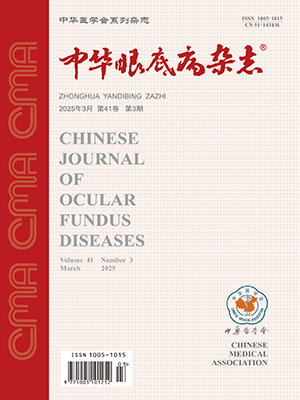Objective To investigate the effects of genistein with different concentration on proliferation and apoptosis of cultured human retinal pigment epithelial (RPE) cells in vitro. Methods The effect of genistein with the concentration of 5,10,25,50,75,and 100 mg·L-1on the proliferation of cultured RPE was examined by tetrazolium salt (MTT) assay and AgNORs staining. The cell apoptosis was detected by terminal deoxynucleotidyl transferase-mediated deoxyuridine 5-triphosphate nick-end labeling (TUNEL) methods, in the mean time, the morphologic changes of cell apoptosis were observed by light microscopy and transmission electronic microscopy, the results of which were compared with the normal RPE cells. Results Genistein with the concentration of 25, 50, 75, and 100 mg·L-1had a dose-dependent and time-dependent antiproliferative effects on RPE cells with the inhibitory rate of 12.0%-64.6% (P<0.05). The results of AgNORs staining showed that the number of AgNORs in the nucleolus decreased when treated by genistein. In TUNEL staining, the median of percent of apoptotic RPE cells was 7.6%, 9.8%, 13.7% when treated with 50 mg·L-1genistein, 10.3%, 16.4%, 23.4% when treated with 75 mg·L-1genistein, and 15.4%, 21.2%, 35.8% when treated with 100 m g·L-1genistein respectively for 24, 48, and 72 hours. After the treatme nt with 50 mg·L-1genistein for 48 hours, the apoptosis in the nucleolus of RPE cells was found. Conclusions Genistein with different concentrations has a dose-dependent and time-dependent antiproliferative effect on RPE cells. Genistein can induce the apoptosis of RPE cells when it reaches a certain extent of concentration. (Chin J Ocul Fundus Dis,2004,20:241-244)
Citation: WANG Haiyan,HUI Yannian,WANG Yusheng. Influence of genistein on proliferation and apoptosis of cultured human retinal pigment epithelial cells. Chinese Journal of Ocular Fundus Diseases, 2004, 20(4): 241-244. doi: Copy
Copyright © the editorial department of Chinese Journal of Ocular Fundus Diseases of West China Medical Publisher. All rights reserved




